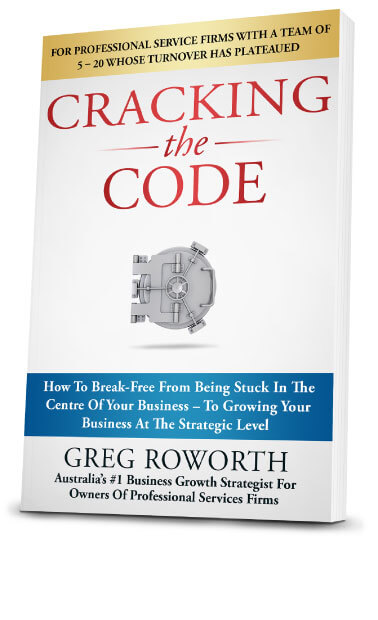The Critical Growth Barriers for Professional Service Firms
Posted by Greg Roworth on Mar 28, 2022

From my observations, which are supported by the HBR classic article, Evolution and Revolution as Organizations Grow by Larry E. Greiner, there appear to be four distinct levels at which professional service firms operate, with a critical barrier at each level that prevents most businesses advancing to the next level.
Struggle
The foundational level is the level that most consulting business owners occupy, where their business is more like an occupation than a real business. This level is where most business owners struggle, because they have not yet developed an effective strategy to attract their ideal clients and the owner’s focus is typically on doing the work that produces the income for the business. The business is always at risk because of the doubt about where the next client is coming from. This barrier needs to be overcome by developing a strategy for consistent client acquisition.
Survival
Some businesses manage to grow to the next level where there is a level of confidence in survival, because there is a relative consistency in workflow and income, even if a truly effective marketing strategy has not been developed. While income may increase, the lack of strategy and expansion of the types of work that is being conducted leads to an increased complexity in the business and the lack of structure in the management processes tends to undermine the continued business growth.
Typically, the owner of the firm could be called a struggling operator, and more often than not, the business is highly dependent on the owner for its survival. If the owner stopped working, the business would be at risk because no one else can make decisions or has the capability to manage the workflows and complexity of the types of work being done. The only answer is to create the strategy and structure to break through the survival barrier.
Scalable
With an effective strategy and structure, the potential is to have a business that is scalable. However, before scalability is assured, the business owner(s) must transition from being operators to orchestrators. This requires a change in mindset about their role and to see that instead of working hard for their business, they need to be focused on creating a business that works for them. Instead of being a struggling operator, they aim to be a thriving orchestrator. At this level, it is necessary that owners are less occupied with revenue generation through their own billable hours, and are focused on developing the intellectual property of the business and creating systems and processes that are replicable and easy to use by lower level team members. A business cannot be effectively scalable without this process of systemization.
A truly scalable business is one that works without the owner having to generate revenue through his or her own fee generating work with clients.
Saleable
A business that works without the owner is a true business and one that is saleable at maximum value, where the owner is the supreme overseer.
In a saleable business, the owners are effectively overseers. They do not need to be involved in day-to-day operations, or even in management activities. They can operate at the strategic level and be involved in developing strategy and plans with the management team, while the management team is then accountable to the overseer owners for implementing the strategies.
But selling the business is not the only option at this level. Because the business is ultimately scalable, the ambitious business owners have other options for growth. The desire for market supremacy can lead to replication of the business through new markets, either geographically or growth through product extension. At this level, the business has the resources and capability to cope with increased complexity.
While selling a business can lead to the financial realization of the business assets, growth to supremacy also leads to a financial realization of the IP assets of the business, through their wider employment and broader impact. By growing the business through the addition of employees and a management team, the overseer owners can greatly increase their profit per owner, eliminating the restriction created by the partnership model.
For more information about how to overcome the critical growth barriers for professional service firms, read Cracking The Code: How To Break Free From Being Stuck In The Centre Of Your Business – To Growing Your Business At The Strategic Level. Get your copy at https://crackingthecodebook.com.au

